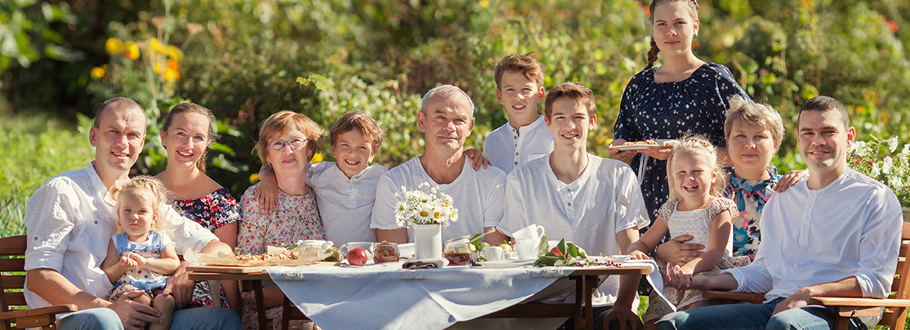This website uses cookies so that we can provide you with the best user experience possible. Cookie information is stored in your browser and performs functions such as recognising you when you return to our website and helping our team to understand which sections of the website you find most interesting and useful.
The Culture and History of Slovakia
Located in the heart of the European continent, Slovakia is a land of approximately 19,000 square miles with about 5.2 million inhabitants. Its natural boundaries are the Tatra or Carpathian Mountains (with a high peak, Gerlach, of 2655 meters) on the north and the Danube River on the south. The Tatras are a skier’s paradise. The beauty found in these mountains, along with Slovakia’s landscapes and countryside, is awesome.
There are several hundred mineral and thermal springs and more than twenty spas in Slovakia. Thousands of visitors from around the world each year utilize these resources for various health ailments.
Also, dozens of castles dot the country. Once used as residences for royalty, then later as places of refuge in times of war, many of them are today used as educational, social, or recreation centers, house museums, and gift shops. They are a main attraction for tourists. Many of the castles, and especially the century-old churches, have a breathtaking Gothic architecture which compares to no other. One will find the churches’ interiors lined in marble and trimmed in gold, all glistening through crystal chandeliers.
The cultural and artistic currents found in Slovakia have strongly prevailed through the centuries to the present day. The people are known for their wood-carving, ceramics, crystal and glass works, and beautifully handcrafted embroidered articles such as tablecloths, napkins, doilies, etc.
Slovakia is a land of music, dance and song. No visitor can or should resist and opportunity to attend one of the hundreds of festivals or ethnic folk ensemble performances given each year. This is a song or dance for nearly every facet of life for the Slovak. Thus, music has become one of Slovakia’s richest traditions.
History
Although their history dates back further, most Slovaks of the past millennium seem to prefer to trace their roots to the ninth century and the apostolic work of Saints Cyril and Methodius. Early rulers, such as Pribina, Mojmir and Rastislav, laid the foundations for the first Slovak state and church (Pribina build the first Christian church in Nitra, Slovakia in 833), yet turmoil and strife always gave autonomy a short life. In fact, the only long lived eras in Slovakia’s history are those of invasion and oppression. The longest of these being when Hungary invaded Europe and Slovakia became part of the Austro-Hugarian Empire in the year 1100.
In 1848, Slovakia made its first serious attempt at separation from Hungary. In 1861, Bishop Stefan Moyses of Banska Bystrica submitted a “Memorandum of the Slovak Nation,” which demanded rights for the Slovak people and their language. A claim was also made for territorial rights within Hungary.
At the end of World War I, the Slovaks and Czechs decided to combine their efforts and separate from the Austro-Hungarian Empire, creating the Republic of Czecho-Slovakia in 1918. Unfortunately, this resulted in a Czech dominated regime, trying to impose the Czech language and culture on the Slovaks and another fight on Slovakia’s hand for autonomy.
By 1938, Slovakia received its independence and the Slovak Republic was formed March 14, 1939. Msgr. Jozef Tiso was named its first president. In 1945, the Slovak Republic fell again, this time into the hands of Soviet partisans who were parachuted into central Slovakia together with Czech and foreign communists.
In 1968, Alexander Dubcek came on the scene and tried to give communism a “human face,” but this, too, ended when Soviet and Warsaw Pact troops invaded Slovakia. Determined, 15,000 demonstrated for religious freedom and human rights in Bratislava in 1988. This finally paved the way for the “Velvet Revolution,” and Slovakia declared independence on January 1, 1993.
The Slovaks are a hard-working, culture-loving, family-oriented, God-fearing people, determined to pass a heritage on to their children’s children. Through prayer, toil and strife, they have beaten the odds.
Web Links
- slovake.eu
Discover Slovakia! Learn Slovak. Multimedia library. Find friends. - Slovak.com
A one-stop guide to the Canadian based Slovak Cultural and Information Center, whose mandate is to serve the Cultural and Information needs of both Slovaks and Canadians. - Slovak Catholic Federation
Its purpose is to promote Slovak Catholic heritage and its awareness among Slovak Catholics in the United States. - Lucina Slovak Folklore Ensemble
Lucina Slovak Folklore Ensemble is a non-profit dance ensemble group based in Cleveland, Ohio. The dance ensemble travels throughout North America performing traditional Slovak dances. The website features links to various videos and photo galleries from performances.







